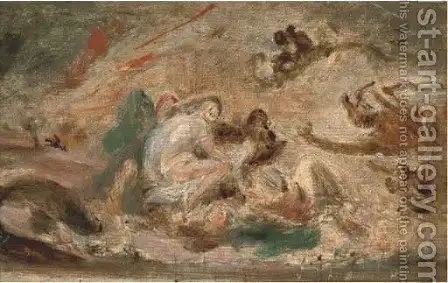Angels can only be glorified if there is a devil in disguise. The interpretations of the devil through devil paintings speak of its form of darkness. A monstrous entity of an evil imbibed character yet portrays something beautiful in its way.
The Age of Renaissance Art brought with it a rich depiction of demons and devil characters on canvas. Devil paintings, lucifer paintings, and paintings of the sort with a spark of evil started to present their symbolic representation through artworks pictographically.
The segment below captures some great ancient styles like that of a devil with a goatee, lucifer paintings, Satan paintings, and other famous paintings, each one telling its own story.
How Did the Goatee Image of the Devil Arise?
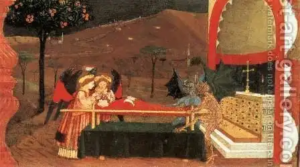
In Medieval and Renaissance art, the God Pan was associated with goat-like features, including a goatee. A goatee is a style that dates back to Ancient Greece and Ancient Rome, where the facial hairs incorporate a man’s chin but not on his cheeks.
The popularity of the goatee style came into being when Christianity became a widespread religion and began copying the imagery and illustrations from pagan mythological characters and events. Satan was given resemblances of Pan and started a new era of style with a goatee.
The tradition of Satan paintings inspired many artists to carve the beauty of evil drawings or famous demons of the time on canvas. The goatees with incorporated mustaches became an awe-inspiring fashionable trend for men across all socioeconomic classes and professions through it.
Wild Chase

Franz Von Stuck’s Wild Chase is an elite mythological German painting that depicts the Teutonic legend of Wotan the Mad Hunter, a symbol that personifies death and destruction.
With the trademark little goatee style mustache, brooding eyes, and large nose with dark hair, he rides in the night, leaving horror in his wake. Frank painted it in 1889, the year of Hitler’s birth, and many scholars also observed an uncanny resemblance of Adolf Hitler with the painting’s character.
The Temptation of St. Anthony
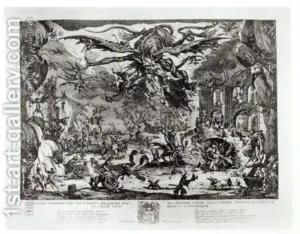
Who would have thought that someone’s bad dreams can turn into art? Jacques Callot’s ascetic lifestyle, where he often led to demonic and erotic hallucinations, provided him with the chance to showcase unique art pieces in front of the world. One such iconic painting is ‘The Temptation Of St. Anthony.’
This bizarre theatrical print represents the glimpse of dark and unfortunate moments Jacques Callot faced as nightmares. But this is not just it. The evil painting also displays another side; more specifically, it is the patron of plague sufferers. The artist’s father died due to a plague a few years back he crafted this print.
Jacob’s Dream
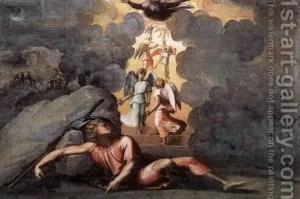
In the Old Testament Of Genesis, the demon painting ‘Jacob’s Dream’ is explained with a wild thrill. According to it, ‘Jacob laid down in the wilderness to sleep while on his way to Haran’. After that, he rested his head on the stone; Jacob experienced angels ascending and descending a ladder to heaven in his dreams. The fortunate event was when God appeared and blessed him.
The overall scenario is illustrated as a monumental Renaissance-style artwork named ‘Jacob’s dreams. Painted by Raphael, the figure is said to be one of the most wondrous in Italian art history. The glimpse sheerly promotes the magic and divinity of the universe. After all, it is a reminder that no one can head to heaven on their own; it’s the hope in God that will help humans to embrace the same.
The Nightmare

Painted by the Anglo-Swiss artist Johann Henry Fuseli, the demon painting represents a woman sleeping in a deep sleep with her arms thrown below her and crouched on her chest. The canvas exaggerates a dreaming woman and the content of her nightmare through this devil renaissance artwork. The incubus and horse’s head personify the contemporary belief and folklore about demons.
Fuseli’s brilliant coloration is set against the darker reds, yellows, and ochres of the background; he used a chiaroscuro effect to create intense contrasts between lighter and darker shades. Red velvet curtains surround the room that drapes behind the bed, emerging from a parting in the curtain that lies above the head of a horse with bold and featureless eyes.
Peste à Rome [Plague in Rome]
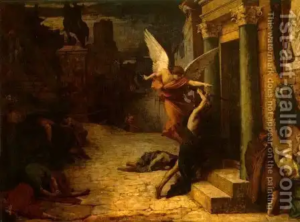
Around a central void, amidst the background covered by a few houses, fugitives, and the equestrian statue of Marcus Aurelius, Jules has picturized affected plague victims, in the shadows lower-left counterbalanced by the two angels exemplifying terror, in whole light, on the right side of the painting.
The controversial stances, Life and death, Paganism, and Christianity, are opposed in this painting which wavers between the elemental concept of symbolism and fantasy. It was regarded as one of the most acclaimed works in the Salon in Paris in 1869.
Conclusion
The segment, as mentioned above, introduced you to the goatee-style devils that were and are pretty popular in representing demons of all times. Other than this, it illustrates paintings of Renaissance art inspired by devil paintings in their visualization. You can browse through more of these paintings at the 1st Art Gallery.
 HammBurg Be informed with latest news, reviews, entertainment, lifestyle tips, and much more.
HammBurg Be informed with latest news, reviews, entertainment, lifestyle tips, and much more.

